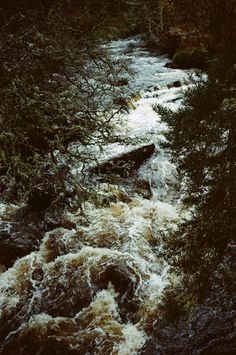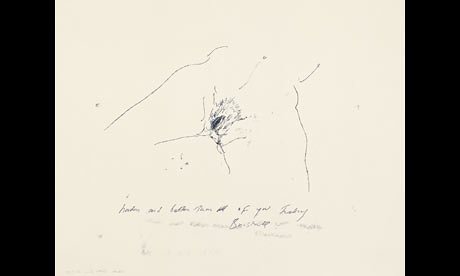
The above image was my first shaped painting, based on feminism and the bigotry we still face today. It was also made just before the election was held in America, when a lot of offensive things were said about gender, race, sexuality and ableism. Ever since making this piece, I’ve been making many different shaped paintings based on feminism and racial issues, especially.

I enjoy adding text to the images, especially in bold colours and large text for extra effect on the issue I’m addressing. I wrote, “My body isn’t obscene”, for this piece because I’ve always been confused and often angry over regulations on social media, especially Facebook, where we’re allowed to say Nazi slurs but not show our breasts. As a social experiment by a German photographer, Olli Waldhauer, shows just this, as he places a woman without any clothing on the top half of her torso next to a man holding up racist signs, and it was put down because of nudity. (http://www.theverge.com/2015/11/3/9662836/facebook-hate-speech-germany-protest-topless-photo-racism). I’ve also noticed how many ‘young’ breasts or breasts that aren’t obviously female at first glance can slip through the female breats ban, such as in advertisements. An artist called Ella Dreyfus has challenged this by using her artwork on Aboriginal women, who show their breasts that later on had to be censored, lead the internationally acclaimed artist and senior lecturer at the National Art School to believe that Facebook deems some female breasts more acceptable than others. (http://www.smh.com.au/technology/web-culture/how-facebook-decides-which-female-breasts-you-can-see-20160315-gnjdub.html)

I made this piece because I often hear my male flatmates speak of black women as an unusual fetish. They often say things like, “I’d love to go with a black bird, they can be so hot”, without even realising how disrespectful to women they’re being, as well as racist. However, it’s sadly said very often by many people. Many races that aren’t white are seen as amusing, such as Native Americans and Halloween costumes based on them that include sacred crowns and headdresses. These are worn without realising the offence it creates. The piece is meant to address this issue because it’s an issue that many refuse to accept or believe is there.
I used red crossed over the nipples to, again, symbolise the censorship women face as well as how people see black women and women of other races as purely sexual objects especially more than white women. I also only used the top half of the torso and didn’t give her any legs, arms or a head to show vulnerability, being immobile objects and without identity, something women of different ethnicity have to challenge daily.
I wanted to make pieces that value the strength and happiness different women hold. I made both of these; one has an identity because I gave her a facial profile and one has her back turned, but I gave her a strong and harsh beginning of a backbone. The first one is symbolic because I wanted to go back to using eye imagery, like I did with my very first one, which reflects on society and how narrowly we look at people. However, this is supposed to be the opposite by adding many different eyes to her face to symbolise acceptance and an open mind. The one on the right is meant to be a powerful figure without ever seeing her face; we don’t know if she’s attractive or not, all we know it that she has strength in her back and a bold haircolour.

This piece subtly shows a feminine figure to let the main focus be the text. I also used red acrylic paint to do this to show passion for the subject of how women are objectified to the point of believing that their main purpose is to please and serve a man. However, I wanted the gender to be ambiguous by using stereotypes and social constructs; I painted the figure in blue, which is usually seen as a masculine colour, pointing out how males are also now seeing this effect since the rise in male modelling, as well as for transgender people.

I used the quote, “she’s all legs”, as my inspiration for this piece. I also gave her small feet because it’s desirable in many countries for women to have incredibly small feet. This is meant to be a flirtatious piece that almost reclaims the expectation for women to be desirable because they aren’t shy, overpowered legs; I made them “happy legs”. I’m currently looking into what’s empowering to me and other women, and I definitely thought that this would fit in well.

Again, I wanted to look into gender ambiguity. I wanted the portrait to have masculine and feminine features, as well as having both pink and blue on it. I was also trying to touch on all aspects of the LGBT+ community, such as transgender people.

This is a painting of Marilyn Monroe from a famous photograph, but only her body, in order to highlight all that everyone thought was important about her; not her talents, troubles or any other characteristics she had, just like what many women face. She’s probably one of the most famous objectified and over-sexualised women to have existed, thus an excellent example for my work.

This shaped painting is half a self portrait, half a portrait of all women. I mean this in the way that it looks like me, but represents my freedom and the freedom that all women should have. I tried showing this by using sunglasses because it’s an obvious “easy going” look, as well as having a darker side or meaning, which is exactly how I see women’s rights at this point in time. I wanted to display how many women in Western countries are much freer than other women in perhaps poorer countries, showing how there is still a lot of work to do before women are treated totally equal. However, this does not mean that Western countries offer women freedom within some subjects, such as abortion, as they don’t allow women to receive education in Pakistan which made headlines recently when the Taliban shot 15-year-old Malala Yousafzai in the head for pursuing her right to learn.

I made this to further develop my theme of women’s bodies being completely natural and not at all obscene, which is what many people think once a woman chooses to show more than is seen acceptable. I’m also going to look into comparing women to snakes and what it has meant when artists, poets, writers and play writers when they choose this metaphor to describe women.
 This idea came to me when I saw in a comment section on facebook that had a woman being attacked for calling herself a feminist while wearing a hijab in her profile picture. She should have the right and freedom to wear whatever she wants to which is exactly what feminism is. I kept with the theme of using pink and blue together to create a sort of unity between all genders, as well as harsh language to add urgency to the theme.
This idea came to me when I saw in a comment section on facebook that had a woman being attacked for calling herself a feminist while wearing a hijab in her profile picture. She should have the right and freedom to wear whatever she wants to which is exactly what feminism is. I kept with the theme of using pink and blue together to create a sort of unity between all genders, as well as harsh language to add urgency to the theme.

I used a lot of red under-layer paint for the first piece, green for the middle piece and blue and green for the last, in quick strokes with a lot of texture by using thick paint. I decided to use red for the female reproductive system piece because I wanted it to come through the black, as if it’s seeping blood and act as a metaphor for inequality, such as the tampon tax, for example, as well as the argument of how women are too ‘hormonal’ to be responsible/in power. I also added thorns to the piece to symbolise women being fierce but their bodies and anatomy is still beautiful, like a rose. I’ve been wanting to use flower/nature imagery for a while, therefore I’m very happy with this piece.
The female figures have green paint showing through the ‘skin’, which is also meant to symbolise how women’s bodies are totally natural and not at all obscene. I decided to make two women; one showing the front, standing upright with her arms positioned in almost a hard-working, powerful way on her hips and a woman’s back, but slightly bending with a bit of weight on her. The two bodies are meant to symbolise the link between all women and how all are very capable of being strong and fierce. I wanted to add more nature into the piece for it to all tie together well, therefore I opened up the front-facing woman’s stomach and revealed flowers where her reproductive system would be, to once again show that her body is natural and fierce.
I wanted to create a lot of texture for this one, and it ended up being one of the largest shaped paintings I had done. I created abstract faces of women, one was bald and full of warm, bold colours while the other had cool colours, creating a contrast within the piece. I also included long grass/leaf type things coming out, adding a natural element to the work, once again. The textured bit is heavy and chaotic, reflecting the unfairness of the fashion industry towards women.
This is the final shaped painting I created, which also became the largest one I’ve created, showing the confidence I now have to create larger and more ambitious pieces. I included body parts of different women from different races, looking into fetishised body parts, such as black women in porn, young school girl clothing and bare shoulders, which is seen as provocative. I then added roses where the head should be and around the same area as the female reproductive system to carry on with the theme of the naturalness of a woman.















































 This idea came to me when I saw in a comment section on facebook that had a woman being attacked for calling herself a feminist while wearing a hijab in her profile picture. She should have the right and freedom to wear whatever she wants to which is exactly what feminism is. I kept with the theme of using pink and blue together to create a sort of unity between all genders, as well as harsh language to add urgency to the theme.
This idea came to me when I saw in a comment section on facebook that had a woman being attacked for calling herself a feminist while wearing a hijab in her profile picture. She should have the right and freedom to wear whatever she wants to which is exactly what feminism is. I kept with the theme of using pink and blue together to create a sort of unity between all genders, as well as harsh language to add urgency to the theme.









































































